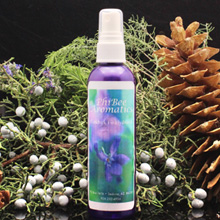ARIZONA EVERLASTING (Pseudognaphalium leucocephalum)
By Clare Licher
 In 1961, the Journal of Pharmeceutical Sciences published the article “Essential Oil Plants of Southern Arizona”. We sometimes refer to this article to see if something that we have distilled, or are thinking of distilling, has been done before, and what their results were. There were no Pseudonaphaliums on their list, so this is quite possibly the first time that this plant has been distilled.
In 1961, the Journal of Pharmeceutical Sciences published the article “Essential Oil Plants of Southern Arizona”. We sometimes refer to this article to see if something that we have distilled, or are thinking of distilling, has been done before, and what their results were. There were no Pseudonaphaliums on their list, so this is quite possibly the first time that this plant has been distilled.
I don’t think we have encountered more confusion about the name of a plant than we have for this one! We had to consult Botanical Accuracy or the “Better Botanical Business Bureau” to choose a common name. Even the latin name has recently been changed from Gnaphalium leucocephalum to Pseudognaphalium leucocephalum.
 The common names for Pseudognaphaliums include Rabbit Tobacco, Everlasting, Sweet Everlasting, Life Everlasting, Cudweed (no doubt the cowboy name), Old Field Balsam, Sweet White Balsam, Indian Posy, Poverty Weed, Gordolobo, and last but certainly not least… Fussy Gussy! In Southern Arizona, this species is most often called Gordolobo (a Spanish name which is also used for Mullein, and adds to the confusion) or Cudweed (far to undignified), Lemon Cudweed, or Everlasting (which could be confused with Helichrysum). We have chosen to call it Arizona Everlasting. It has a strong visual resemblance and close relation to Pearly Everlasting Anaphalis margaritacea, a common Arizona medicinal plant.
The common names for Pseudognaphaliums include Rabbit Tobacco, Everlasting, Sweet Everlasting, Life Everlasting, Cudweed (no doubt the cowboy name), Old Field Balsam, Sweet White Balsam, Indian Posy, Poverty Weed, Gordolobo, and last but certainly not least… Fussy Gussy! In Southern Arizona, this species is most often called Gordolobo (a Spanish name which is also used for Mullein, and adds to the confusion) or Cudweed (far to undignified), Lemon Cudweed, or Everlasting (which could be confused with Helichrysum). We have chosen to call it Arizona Everlasting. It has a strong visual resemblance and close relation to Pearly Everlasting Anaphalis margaritacea, a common Arizona medicinal plant.
This species is endangered in Southern California, but is stable and common in some areas of Southern Arizona and Northern Mexico.
We did not obtain any essential oil from our first distillation, but the plants produced a nice hydrosol. The leaves of this plant have a lemony aroma, but this did not translate to the hydrosol. The aroma and taste are reminiscent of a Summer field, dry with a subtle note of wildflowers.
 Charles Kane, a Tucson based herbalist, uses the infusion for the treatment of bronchitis. It has antimicrobial properties (as do many of the other species of Pseudognaphaliums), and is “useful for dislodging impacted mucus that is difficult to expectorate”.
Charles Kane, a Tucson based herbalist, uses the infusion for the treatment of bronchitis. It has antimicrobial properties (as do many of the other species of Pseudognaphaliums), and is “useful for dislodging impacted mucus that is difficult to expectorate”.
Traditionally, decoctions of various species of Pseudognaphaliums were used to treat coughs, lung pain and tuberculosis. Infusions and smoking the dried leaves were also used for asthma. The leaves were chewed for sore mouth and throat, and poultices were applied to the throat for mumps, or any other part of the body where there was pain or swelling.
There were also many mentions of benefits for the nervous system. Decoctions were used internally and as washes for nervousness, insomnia, and for persons who “wanted to run away”. Steam of the dried leaves was inhaled for “foolishness”. The smoke (smudge) was used to bring back a “loss of mind”, to revive an unconscious patient, and to fumigate a premises to dispel a ghost.
Pseudognaphalium leucocephalum is non toxic and safe to use. However, there are several reports of the plant being mistaken for Senicio longilobus, which as toxic. It is recommended not to purchase this herb, and only collect it in the company of a plant nerd.
I am just beginning to work with this hydrosol, so I have only one subjective experience to share. At a certain point while writing this document I received a phone call that caused me to lose my focus. Not only that, the topic brought up some old self doubts and nervousness arose in me. I “wanted to run away”. Twice I used ½ teaspoon of the Arizona Everlasting in a cup of warm water. There were no immediate dramatic effects, but in a short time I was able to move forward through my fear. The next time I sat down to write, the writing came easily, and I was able to keep a strong focus (which included not answering the phone!).
Buy Arizona Everlasting Hydrosol here
References:
McCaughey W.F. and Buehrer, T.F. Essential Oil Plants of Southern Arizona. Journal Of Pharmaceutical Sciences, Vol. 50, No. 8, August 1961
Kane, Charles W. Herbal Medicine of the American Southwest. Lincoln Town Press 2006
Moerman, Daniel E. Native American Medicinal Plants, An sEthnobotanical Dictionary. Timber Press Inc. 1998
Struwe, Dr. Lena. Botanical Accuracy, Gordolobo is or isn’t Mullein Sunday, May 5, 2013 www.botanicalaccuracy@gmail.com


